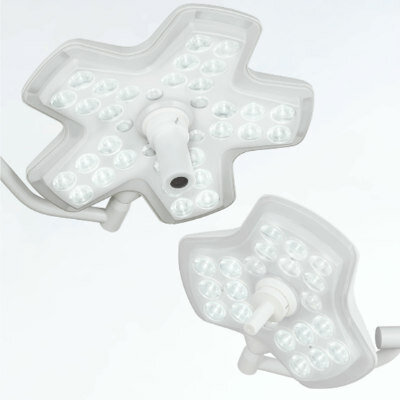Excessive Maternal Fluoride Levels May Lower Child IQ
|
By HospiMedica International staff writers Posted on 12 Oct 2017 |
High prenatal fluoride exposure during pregnancy is associated with poorer scores on tests of cognitive function in offspring, according to a new study.
Researchers at the University of Toronto (Canada), Instituto Nacional de Salud Pública (Cuernavaca, Mexico), and other institutions conducted a study of 299 mother–child pairs to estimate the association of prenatal exposure to fluoride with offspring neurocognitive development. The researchers used an ion-selective electrode technique to measure fluoride in archived urine samples taken from mothers during pregnancy and from their children when 6–12 years old, adjusted for urinary creatinine and specific gravity.
Child intelligence was measured by the general cognitive index (GCI) of the McCarthy Scales of Children’s Abilities at age four, and full-scale intelligence quotient (IQ) from the Wechsler Abbreviated Scale of Intelligence (WASI) was measured at ages 6–12. Mean values for urinary fluoride in all of the mothers and children were 0.90 mg/L and 0.82 mg/L, respectively. Analysis revealed that an increase in maternal urine fluoride of 0.5mg/L predicted a reduction of 3.15 in the children’s GCI and 2.50 in their IQ scores, respectively. The study was published in the September 2017 issue of Environmental Health Perspectives.
“Our study shows that the growing fetal nervous system may be adversely affected by higher levels of fluoride exposure. It also suggests that the prenatal nervous system may be more sensitive to fluoride compared to that of school-aged children,” concluded study co-author Howard Hu, MD, of the University of Toronto, and colleagues. “Our findings, combined with evidence from existing animal and human studies, reinforce the need for additional research on potential adverse effects of fluoride, particularly in pregnant women and children.”
Fluoride is the simplest anion of fluorine. Community water, salt, milk, and dental products have been fluoridated for more than 60 years to prevent dental caries, while fluoride supplementation has been recommended to prevent bone fractures. In addition, people may be exposed to fluoride through the consumption of naturally contaminated drinking water, dietary sources, dental products, and other sources. The maximum safe daily consumption of fluoride is 10 mg/day for an adult (U.S.) or 7 mg/day (European Union).
Related Links:
University of Toronto
Instituto Nacional de Salud Pública
Researchers at the University of Toronto (Canada), Instituto Nacional de Salud Pública (Cuernavaca, Mexico), and other institutions conducted a study of 299 mother–child pairs to estimate the association of prenatal exposure to fluoride with offspring neurocognitive development. The researchers used an ion-selective electrode technique to measure fluoride in archived urine samples taken from mothers during pregnancy and from their children when 6–12 years old, adjusted for urinary creatinine and specific gravity.
Child intelligence was measured by the general cognitive index (GCI) of the McCarthy Scales of Children’s Abilities at age four, and full-scale intelligence quotient (IQ) from the Wechsler Abbreviated Scale of Intelligence (WASI) was measured at ages 6–12. Mean values for urinary fluoride in all of the mothers and children were 0.90 mg/L and 0.82 mg/L, respectively. Analysis revealed that an increase in maternal urine fluoride of 0.5mg/L predicted a reduction of 3.15 in the children’s GCI and 2.50 in their IQ scores, respectively. The study was published in the September 2017 issue of Environmental Health Perspectives.
“Our study shows that the growing fetal nervous system may be adversely affected by higher levels of fluoride exposure. It also suggests that the prenatal nervous system may be more sensitive to fluoride compared to that of school-aged children,” concluded study co-author Howard Hu, MD, of the University of Toronto, and colleagues. “Our findings, combined with evidence from existing animal and human studies, reinforce the need for additional research on potential adverse effects of fluoride, particularly in pregnant women and children.”
Fluoride is the simplest anion of fluorine. Community water, salt, milk, and dental products have been fluoridated for more than 60 years to prevent dental caries, while fluoride supplementation has been recommended to prevent bone fractures. In addition, people may be exposed to fluoride through the consumption of naturally contaminated drinking water, dietary sources, dental products, and other sources. The maximum safe daily consumption of fluoride is 10 mg/day for an adult (U.S.) or 7 mg/day (European Union).
Related Links:
University of Toronto
Instituto Nacional de Salud Pública
Latest Patient Care News
- Revolutionary Automatic IV-Line Flushing Device to Enhance Infusion Care
- VR Training Tool Combats Contamination of Portable Medical Equipment
- Portable Biosensor Platform to Reduce Hospital-Acquired Infections
- First-Of-Its-Kind Portable Germicidal Light Technology Disinfects High-Touch Clinical Surfaces in Seconds
- Surgical Capacity Optimization Solution Helps Hospitals Boost OR Utilization

- Game-Changing Innovation in Surgical Instrument Sterilization Significantly Improves OR Throughput
- Next Gen ICU Bed to Help Address Complex Critical Care Needs
- Groundbreaking AI-Powered UV-C Disinfection Technology Redefines Infection Control Landscape
- Clean Hospitals Can Reduce Antibiotic Resistance, Save Lives
- Smart Hospital Beds Improve Accuracy of Medical Diagnosis
- New Fast Endoscope Drying System Improves Productivity and Traceability
- World’s First Automated Endoscope Cleaner Fights Antimicrobial Resistance
- Portable High-Capacity Digital Stretcher Scales Provide Precision Weighing for Patients in ER
- Portable Clinical Scale with Remote Indicator Allows for Flexible Patient Weighing Use
- Innovative and Highly Customizable Medical Carts Offer Unlimited Configuration Possibilities
- Biomolecular Wound Healing Film Adheres to Sensitive Tissue and Releases Active Ingredients
Channels
Critical Care
view channel
Light-Based Technology to Measure Brain Blood Flow Could Diagnose Stroke and TBI
Monitoring blood flow in the brain is crucial for diagnosing and treating neurological conditions such as stroke, traumatic brain injury (TBI), and vascular dementia. However, current imaging methods like... Read more
AI Heart Attack Risk Assessment Tool Outperforms Existing Methods
For decades, doctors have relied on standardized scoring systems to assess patients with the most common type of heart attack—non-ST-elevation acute coronary syndrome (NSTE-ACS). The GRACE score, used... Read moreSurgical Techniques
view channel
Minimally Invasive Endoscopic Surgery Improves Severe Stroke Outcomes
Intracerebral hemorrhage, a type of stroke caused by bleeding deep within the brain, remains one of the most challenging neurological emergencies to treat. Accounting for about 15% of all strokes, it carries... Read more
Novel Glue Prevents Complications After Breast Cancer Surgery
Seroma and prolonged lymphorrhea are among the most common complications following axillary lymphadenectomy in breast cancer patients. These postoperative issues can delay recovery and postpone the start... Read moreHealth IT
view channel
Printable Molecule-Selective Nanoparticles Enable Mass Production of Wearable Biosensors
The future of medicine is likely to focus on the personalization of healthcare—understanding exactly what an individual requires and delivering the appropriate combination of nutrients, metabolites, and... Read moreBusiness
view channel
Philips and Masimo Partner to Advance Patient Monitoring Measurement Technologies
Royal Philips (Amsterdam, Netherlands) and Masimo (Irvine, California, USA) have renewed their multi-year strategic collaboration, combining Philips’ expertise in patient monitoring with Masimo’s noninvasive... Read more
B. Braun Acquires Digital Microsurgery Company True Digital Surgery
The high-end microsurgery market in neurosurgery, spine, and ENT is undergoing a significant transformation. Traditional analog microscopes are giving way to digital exoscopes, which provide improved visualization,... Read more
CMEF 2025 to Promote Holistic and High-Quality Development of Medical and Health Industry
The 92nd China International Medical Equipment Fair (CMEF 2025) Autumn Exhibition is scheduled to be held from September 26 to 29 at the China Import and Export Fair Complex (Canton Fair Complex) in Guangzhou.... Read more
















